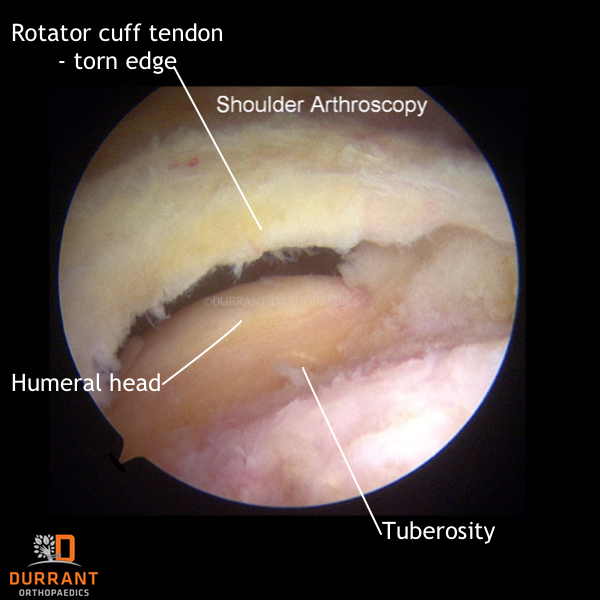- Home
- Dr Shailesh Keshav Mishra
- Arthroscopy
- Joint Replacement surgeries
- Arthritis care
- Type of Sports injuries
- Gallery
- Blogs
- Testimonials
- Contact Us
Rotator cuff is the name given to the group of muscles of the shoulder located under the deltoidmuscle in direct contact with the shoulder's gleno-humeral joint. The cuff’s muscles contribute to rotational mobility and elevation of the shoulder. The shoulder’s rotator cuff is made up of the tendons of four muscles: the supraspinatus muscle, the infraspinatus muscle, the teres minormuscle, the tendon of the long head of the biceps and the subscapularis muscle. The tendons of the cuff’s muscles are among the most fragile of the human body, their lesions, called “tears” are frequent, in particular infraspinatus tears. Shoulder rotator cuff tears are a frequent pathology that causes shoulder pain and stiffness. This shoulder pathology is usually Degenerative but shoulder injuries can also contribute to it.
Some of the treatment options for a rotator cuff injury are as follows:
Some of the treatment options for a rotator cuff injury are as follows:
Q. What is a rotator cuff tear?
A. A rotator cuff tear is generally a tear in the rotator cuff tendon
Q. Where does a tear most often occur?
A. The rotator cuff tendon most often tears at the point it attaches to the Humerus
Q. Which rotator cuff muscle is most often torn?
A. The Supraspinatus
Q. What is the difference between a full and partial rotator cuff tear?
A. A partially torn rotator cuff is a tear in the tendon that has not been completely detached from the Humerus. A full, or full thickness, tear results in the tendon being completely detached from the Humerus. Please note that a tear does not have to extend throughout the whole width of a tendon.
Q. How else are tendon tears classified?
A. The size or width of the tear is often referred to e.g. a small partial tear
Q. How does a tear occur?
A. Tears can be acute – sudden onset caused by a trauma or chronic - develop over time due to weakness or disease
Q. What are the main symptoms of a rotator cuff tear.
A. Pain and weakness
Q. Where is the pain felt?
A. Most often over the point of the shoulder
Q. How bad is the pain?
A. This varies from person to person and is dependant upon the size of the tear and whether the tear was acute or chronic. It can be significant and lead to a lack of sleep.
Q. How long does the pain last?
A. Often the pain can diminish over a period of days. More often this can take a few months. In the case of a chronic tear the pain is likely to linger as the underlying cause will still exist.
Q. What are the main symptoms of tendonitis?
A. Again, pain and weakness.
Q. Where is the pain felt?
A. Often as a deep ache in the shoulder and from the back of the shoulder to the point
Q. What other symptoms am I likely to have?
A. There may be inflammation, a burning sensation and the pain may increase as you lift the arm
Q.What is the average recovery time for rotator cuff surgery?
A.Recovery can take 4 to 6 months, depending on the size of the tear and other factors. You may have to wear a sling for 4 to 6 weeks after surgery.
Q.Can you drive after rotator cuff surgery?
A. You should not drive as long as you are taking narcotic pain medication. You should also not drive while you are in a sling; as such, I typically recommend that you do not drive for 6 weeks after the surgery.
Whenever possible, rotator cuff tears must be repaired surgically by a specialized surgeon with experience in shoulder arthroscopy, which has become the method of choice for shoulder surgery.
The rotator cuff repair surgery will be performed through a subacromial portal; this repair surgery begins with the removal of the subacromial bursa using a shaver and resection of the lower part of the acromion (or acromioplasty), which provides more space to the tendons of the shoulder’s rotator cuff muscles.



Proper rotator cuff mobility is verified and to help healing, the tendons are debrided with the blade of the shaver, as well as the “footprint”(tuberocity), which is the natural insertion site of the cuff on the shoulder, at the top of the humerus.
Anchors can then be positioned in the greater tubercle, one anteriorly and one posteriorly; then the sutures are passed one by one through the shoulder’s rotator cuff.
Shoulder immobilization will be necessary with the elbow against the trunk for 6 weeks. This immobilization will make it possible to protect the repaired rotator cuff, but also to reduce shoulder pain.

